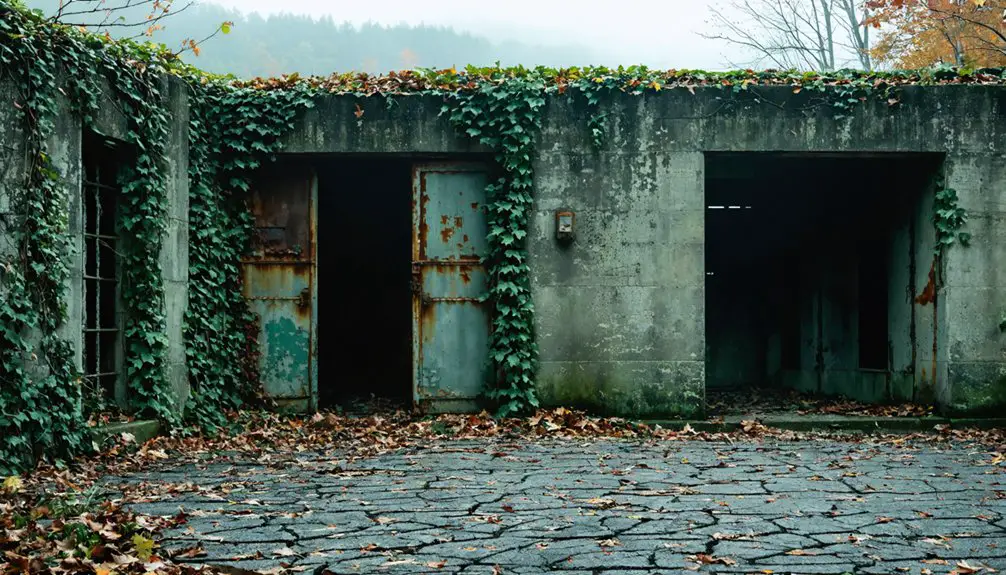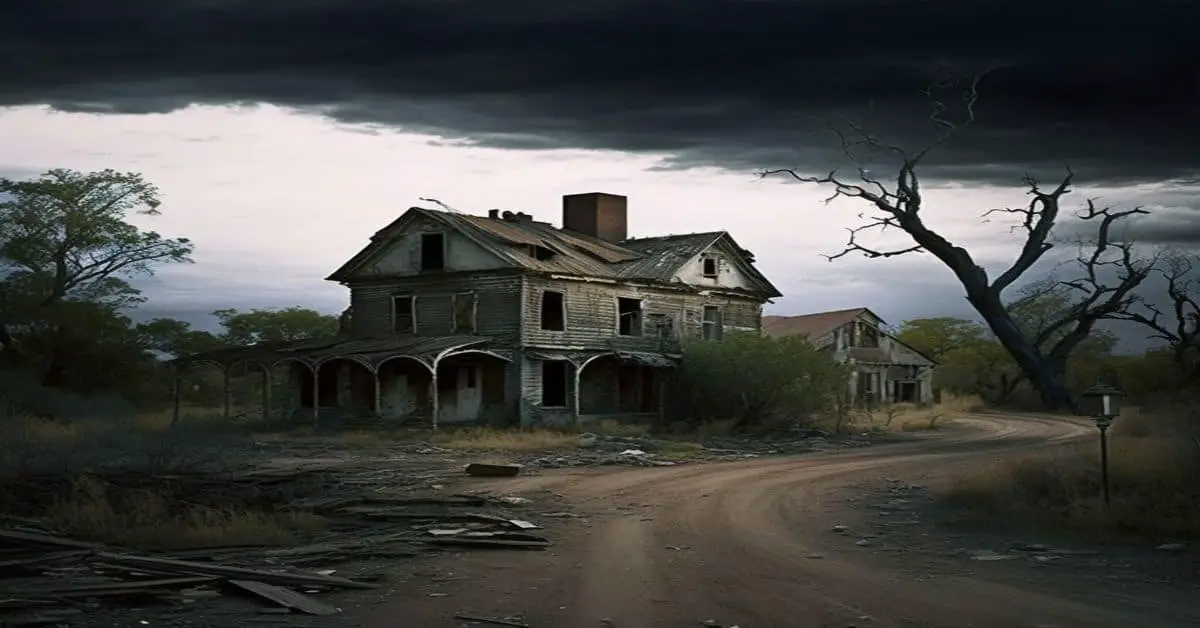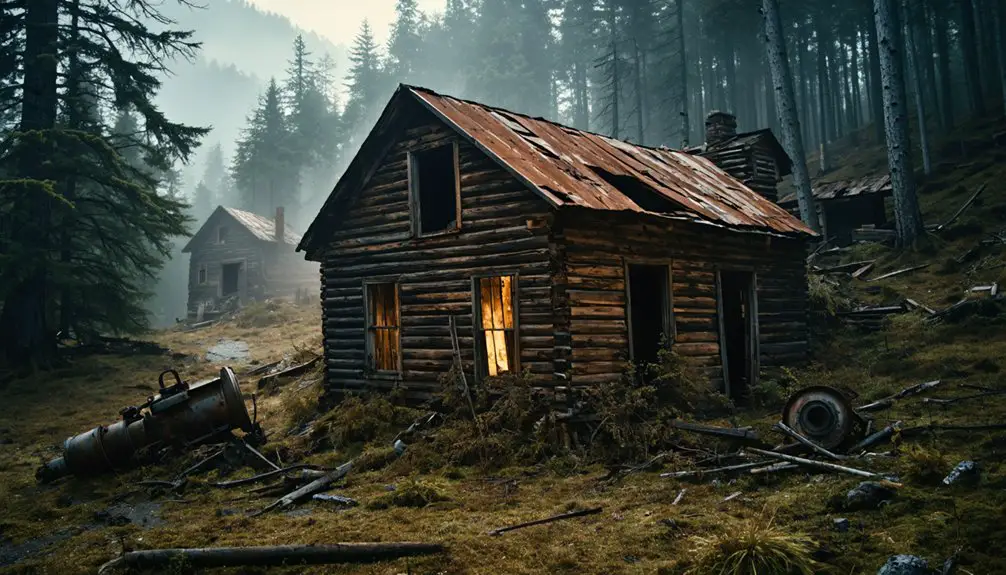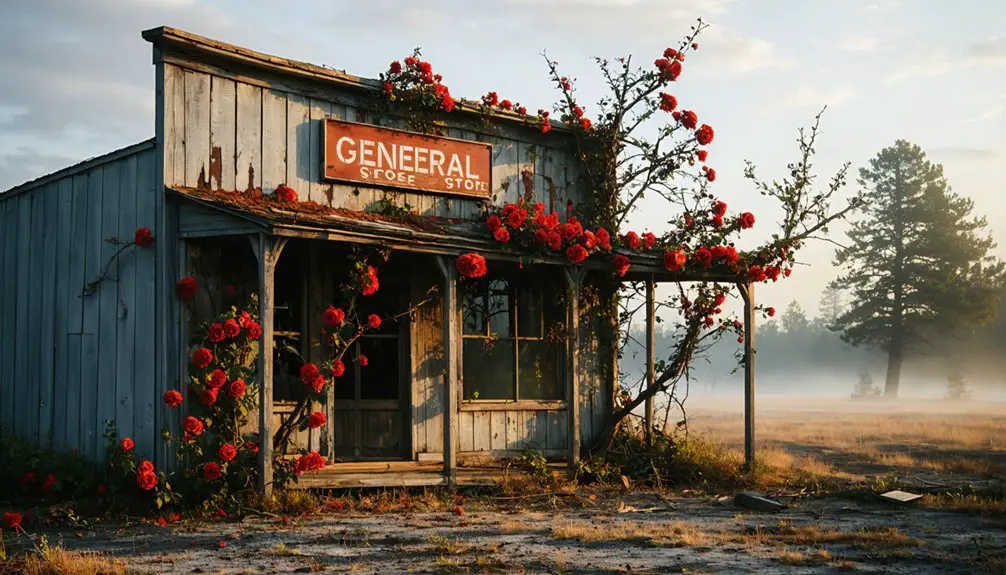You’ll discover Fort Ritchie‘s abandoned 500-acre military complex in Maryland, where distinctive stone buildings reveal America’s classified WWII intelligence training operations. The site trained nearly 20,000 specialists, including the legendary Ritchie Boys who secured 60% of Western Front combat intelligence. After serving as a Cold War communications hub until 1975, the base’s preserved structures, underground bunkers, and microwave towers offer glimpses into classified military history waiting to be uncovered.
Key Takeaways
- Fort Ritchie is a 500-acre former military base in Maryland featuring distinctive stone buildings made from locally quarried Cascade stone.
- The base contains 35 preserved rectangular structures, including The Castle – a unique green granite National Guard headquarters.
- Underground command centers and microwave towers remain from Fort Ritchie’s role as a Cold War communications hub.
- The abandoned base trained nearly 20,000 intelligence specialists during WWII, including the famous German-speaking Ritchie Boys.
- The site currently undergoes revitalization with plans for residential units, manufacturing facilities, and 300 new jobs.
A Hidden Military Intelligence Training Legacy
While many World War II military installations faded into obscurity, Camp Ritchie’s Military Intelligence Training Center (MITC) emerged as a groundbreaking institution that revolutionized U.S. military intelligence training. Opening in June 1942, MITC forged nearly 20,000 specialists who’d reshape wartime strategies through advanced tactical operations.
You’ll find the center’s legacy in its innovative eight-week curriculum, which combined five weeks of core intelligence procedures with three weeks of specialized training. Direction finding, interrogation, and image analysis formed the core training elements.
The facility’s hallmark was its commitment to battlefield realism, featuring mock villages and instructors in German uniforms conducting “passion plays.” These immersive scenarios prepared intelligence teams for critical missions in enemy territory. Students gained hands-on experience with captured documents and enemy equipment to enhance their training.
MITC’s continuous evolution of training methods, incorporating real combat lessons and field unit feedback, established the foundation for modern U.S. Army intelligence operations.
The Ritchie Boys and World War II Operations
Three thousand specially trained German-speaking intelligence operatives, known as the Ritchie Boys, proved instrumental in Allied victory during World War II by securing over 60% of actionable combat intelligence on the Western Front.
The Ritchie Boys’ contributions encompassed frontline intelligence operations across multiple theaters, from D-Day to the Pacific campaigns. Sixty-three members parachuted into Normandy with the 101st Airborne Division, while others conducted high-risk interrogations near combat zones, extracting critical data about enemy positions, troop strength, and defensive installations. Nisei soldiers served in specialized Pacific intelligence roles. The comprehensive training at Camp Ritchie in Maryland equipped them with advanced interrogation and psychological warfare techniques.
Their native German language skills and cultural understanding enabled sophisticated psychological warfare operations, including targeted leaflet drops and frontline broadcasts. This expertise proved invaluable during prisoner interrogations and later supported the prosecution of Nazi war criminals at Nuremberg.
From Cold War Communications to Abandonment
After World War II, Fort Ritchie transformed into an essential Cold War communications nexus, operating as a key node in America’s strategic defense network from 1964 to 1975.
Fort Ritchie emerged as a vital Cold War communications hub, serving as a crucial link in America’s defense infrastructure between 1964-1975.
You’ll find remnants of sophisticated microwave towers and underground command centers that once linked the Pentagon’s War Room and Camp David, enabling rapid presidential broadcasts during crises.
The base’s communications legacy includes concealed infrastructure designed to withstand nuclear blasts, with towers disguised as water facilities and underground sections capable of housing 150 personnel. These facilities were part of the expansive Federal Relocation Arc that stretched across multiple states.
As you explore the abandoned grounds, you’ll discover the ghosts of its intelligence operations, where multilingual specialists once conducted psychological warfare training and aerial analysis. The site’s military intelligence legacy includes the Ritchie Boys, Jewish refugees who became crucial intelligence operatives during World War II.
Architectural Remnants of a Secret Past
The architectural legacy of Fort Ritchie stands preserved in its distinctive stone buildings, designed by self-taught World War I officer Robert Barrick.
You’ll find 35 nearly identical rectangular structures along Barrick Avenue, built with locally quarried Cascade stone that seamlessly integrates with the mountain terrain.
The installation’s crown jewel, The Castle, remains the nation’s only National Guard headquarters constructed entirely of green granite, symbolizing the Army Corps of Engineers’ insignia.
While many structures face preservation challenges, including the former Brigadier General’s Headquarters (Building 301), their robust construction has withstood decades of abandonment.
The historic significance of these military structures reflects early 20th-century architectural priorities: durability over style, function over form, creating an enduring tribute to American military infrastructure.
The original buildings, such as the Finger Buildings, were constructed in 1927 as kitchen facilities for Maryland National Guard’s summer training exercises.
The strategic location near Washington D.C. made Fort Ritchie an ideal site for military intelligence training during World War II.
New Life for a Historic Military Complex
Decades after its decommissioning, Fort Ritchie‘s strategic 500-acre footprint now serves as ground zero for an ambitious public-private revitalization campaign.
You’ll witness a masterful deployment of community revitalization as developers integrate historic preservation with modern infrastructure.
During World War II, the Military Intelligence Training Center prepared nearly 20,000 troops for combat operations.
The economic development operation includes:
- Construction of 413 residential units including townhomes, condos, and single-family dwellings
- Establishment of SJ Incorporation’s 35,000 sq ft advanced manufacturing facility
- Creation of 300 full-time positions within a four-year deployment window
- Strategic tax incentives and conditional loans totaling over $1 million
This tactical transformation positions Fort Ritchie as a regional command center for growth, leveraging its central location between major metropolitan areas.
You’re observing the base’s evolution from military installation to economic stronghold, maintaining its historic integrity while advancing civilian prosperity.
The project received a significant boost when the Maryland Department of Housing and Community Development awarded Catalytic Revitalization Tax Credits in 2023.
Frequently Asked Questions
Are There Any Guided Tours Available at Fort Ritchie?
You can join guided explorations of Fort Ritchie’s historical significance through seasonal tours led by museum staff. They’re available until mid-November, with self-guided options and group tours also offered.
What Paranormal Activities Have Been Reported at the Abandoned Base?
Like shadows at dusk, you’ll encounter frequent ghost sightings of uniformed soldiers, eerie sounds of marching boots, electrical disturbances, and unexplained movements in the barracks and training facilities.
Can Visitors Access the Underground Tunnels Beneath Fort Ritchie?
You can’t access Fort Ritchie’s underground tunnels despite their historical significance. They’re strictly off-limits, secured by military police, and illegal to explore. Consider touring Fort Adams’ authorized tunnels instead.
How Many Original Stone Buildings Still Remain on the Property Today?
You’ll find 35 historically significant rectangular stone buildings along Barrick Avenue, showcasing Depression-era architectural features. While larger two-story stone structures once stood behind them, most have been removed over time.
What Security Measures Are in Place to Prevent Trespassing?
Like a fortress of old, you’ll face strict trespassing laws, active security personnel patrols, surveillance systems, perimeter fencing, and clear warning signage at all entry points around Fort Ritchie’s restricted grounds.
References
- https://en.wikipedia.org/wiki/Fort_Ritchie
- https://www.ritchierevival.com/history
- https://lostandabandonedadventures.weebly.com/ritchie-army-fort-in-maryland.html
- https://www.youtube.com/watch?v=urbwad9GpF4
- https://intellibrary.libguides.com/c.php?g=400493&p=6731278
- https://www.dvidshub.net/news/474074/military-intelligence-training-center-opens-camp-ritchie-19-jun-1942
- https://localnews1.org/early-wwii-intelligence-evident-at-ritchie-boys-museum/
- https://www.uso.org/stories/3057-the-ritchie-boys-the-jewish-u-s-soldiers-who-helped-defeat-the-nazis
- https://encyclopedia.ushmm.org/content/en/article/ritchie-boys
- https://en.wikipedia.org/wiki/Ritchie_Boys



